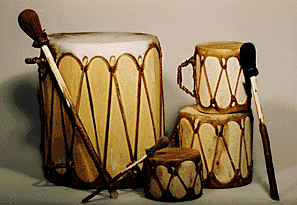Kol haneshama t’hallel Yah, Hallelu Yah (Psalm 150:6)
Let every neshama praise God. Hallelu Yah.
This is the last line of the last psalm in the Book of Psalms – it is the culmination of so many words of poetry, prayer, contemplation and praise. The psalm is part of every Jewish morning service, and it is equally a part of many Christian worship services. And, to add to its universality, many synagogue communities today have become familiar with a melody that just chants this last line over and over again, and that melody was an adaptation of a Pakistani Sufi chant (the mystical, and most universal form of Islam) written by the late Nusrat Fateh Ali Khan.
Six words. On face value, just a simple declaration of praise. Six words that are a gateway to an awesome experience (awesome, as in ‘wow!’ and awesome as in ‘Oh boy, that’s overwhelming, I don’t know if I can handle that’).
It begins with that Hebrew word that I didn’t translate – neshama. Biblically, it means something like ‘living thing’. So sometimes you’ll see a translation that says ‘Let every living thing praise God’, or ‘Let everything that lives praise God’. But the rabbis of ancient times took a look at the creation story in Genesis and found in the second description of how God created human beings the line, ‘And God blew into his nostrils the breath of life (nishmat chayyim), and the man became a living thing (nefesh chayyah) (Gen. 2:7). They understood this to mean not only the ability to breathe, by which we are alive, but that the aspect of our selves that ‘enlivens’ us – the God-given part – is what we call our soul. And so, for the rabbis, neshama also means soul. In fact, in an ancient midrash (expounding on the Torah), they describe 5 different names that were given to the spirit by which we live (Midrash rabbah 14:9), enabling them to describe and explore different aspects or attributes of the soul, of which the neshama is just one.
The final element of this teaching that we need to put it together with a mantra meditation practice on this verse of Psalm 150 requires us to know that, in the Hebrew language, all words are formed around a ‘root’ of three consonant letters. Changing the vowel sound, or the grammar, can change how we would translate the word into English, but the common root in Hebrew teaches us that the words are conceptually and experientially linked. And so, if you look again at the verse from Genesis, you’ll see the word nishmat chayyim – the breath of life. N’shimah means ‘breath’. And so, in the ancient teaching of the midrash, we find that Rabbi Levi says in the name of Rabbi Hanina,: “at each and every breath (neshima) which you breathe, you must praise the Creator” What is the meaning of this? “Kol ha neshama tehallel Ya, Let everything that has breath praise God (Psalm 150, 6).
Jewish mystics turned the phrase one more time, and this becomes the foundation for our meditation practice – let each and every breath be a praise to God.
It is through the act of breathing that we can bring awareness to the Divine spirit that gives life to everything. With this awareness comes gratitude, an opening of the heart, and from this comes praise. When we meditate on the breath with this awareness, it takes us beyond ‘my breath’ and connects us to everything that breathes. We become but one musician in an orchestra; we are responsible for how we play our instrument and the contribution we make with each and every note we play, but we are able to do and be so much more than is possible within our own limitations, when we recognize that we are part of the symphony.
This meditation, connecting us to life itself, and to the Source of all life, cannot be grasped with the mind, but it can be experienced, at least in brief moments. And it not only transforms our awareness of the power of the breath, it also transforms the meaning of what it is to ‘Praise God.’ That will have to wait for another day’s blog.
Rabbi Rachel Gurevitz











